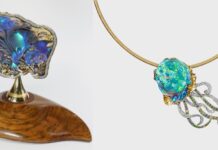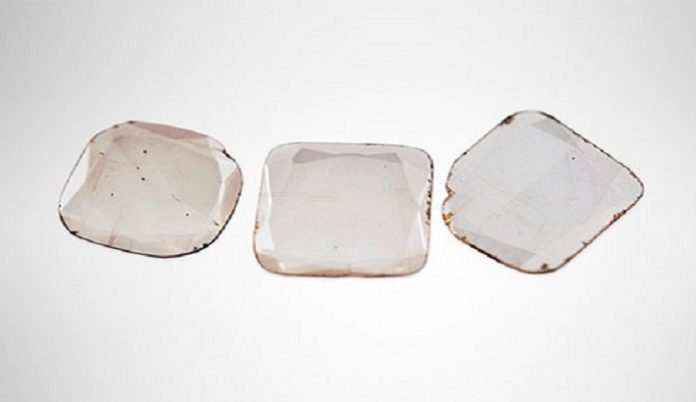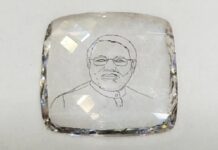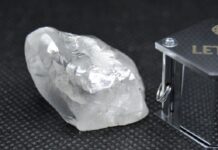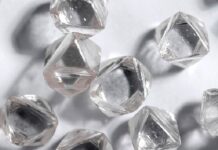The Gem Testing Laboratory (GTL) in Jaipur, a project of GJEPC, recently successfully identified three polki-cut diamonds (a simple and ancient form of a “rose cut”) widely used in traditional Indian kundan-meena jewellery as being glass-filled CVD synthetic diamonds, perhaps the first case of identification of this type by a lab.
Reporting on the process in the Summer 2019 issue of GIA’s journal Gems & Gemology, GTL Director Gagan Choudhary writes that the lab that it was alerted to the possibility of the stones not being natural due to their square profiles and had decided to conduct tests to determine their origin.
Giving the background, Choudhury writes, “As most commercial-quality polkis are fashioned from flat rough crystals (macles, for example) or chips derived from the cutting of larger crystals, they often contain cleavages or fissures opening on the surface, making them even more delicate.”
Over the past decade, such polkis are being filled with high-RI glass to improve their clarity as well as durability, and these have been widely used in kundan-meena jewellery.
Recently, a client of the lab submitted three light gray to brown polki-cut diamonds with square profiles for testing. They weighed 0.27–0.29 ct and measured 6.86–7.41 mm long and 0.36–0.41 mm thick. The client informed the lab that the polkis were natural but wanted to know if they were glass-filled.
Initial examination under a microscope established that there was indeed glass filling in all three – evidenced by colour flashes, typically blue, violet, and pink, along with some crackling effects within the fissures and cleavage planes in two directions, intersecting each other at almost 90° (octahedral cleavage in diamond).
The presence of glass (containing lead and bromine) was further confirmed by energy-dispersive X-ray fluorescence (EDXRF) analyses. These polkis also displayed a few dark brown grains, some of which were associated with stress cracks. No attempt was made to identify the nature of these grains.
Based on prior experience of polkis with square profiles, the lab also performed further tests to confirm the origin of the stone – natural or synthetic. A variety of procedures, including viewing under crossed polarizers, use of infrared spectra; DiamondView imaging, etc established that the stones were actually synthetic CVD diamonds.
Choudhary notes that in the past the lab had seen numerous examples of polki-cut natural diamonds with glass filling, as well as many CVD synthetic diamonds fashioned as polkis. However, this was the first time it had encountered glass-filled CVD synthetic diamond polkis, though their market penetration is unknown. Although glass filling is not challenging to identify, encountering it in synthetic diamonds could lead to a misidentification as natural, especially among the trade, he warned.
Noting that diamond polkis are usually fashioned from flat rough or chips derived during cutting larger crystals, he said they often display triangular or irregular profiles.
As square-shaped polkis offer the best yield for crystals with square profiles, such as natural cubic crystal or synthetic diamond crystals grown by the CVD process, which display a square and tabular habit, “doubts should be raised when the shape is encountered, especially when mixed in parcels of polki-cut natural diamond,” Choudhary suggests.
Pic caption: The three “polkis” exhibiting a square profile that were identified as glass-filled CVD synthetic diamonds.
Photo Courtesy: Gagan Choudhary, GTL and GIA
New Source : gjepc.org
Disclaimer: This information has been collected through secondary research and TJM Media Pvt Ltd. is not responsible for any errors in the same.











